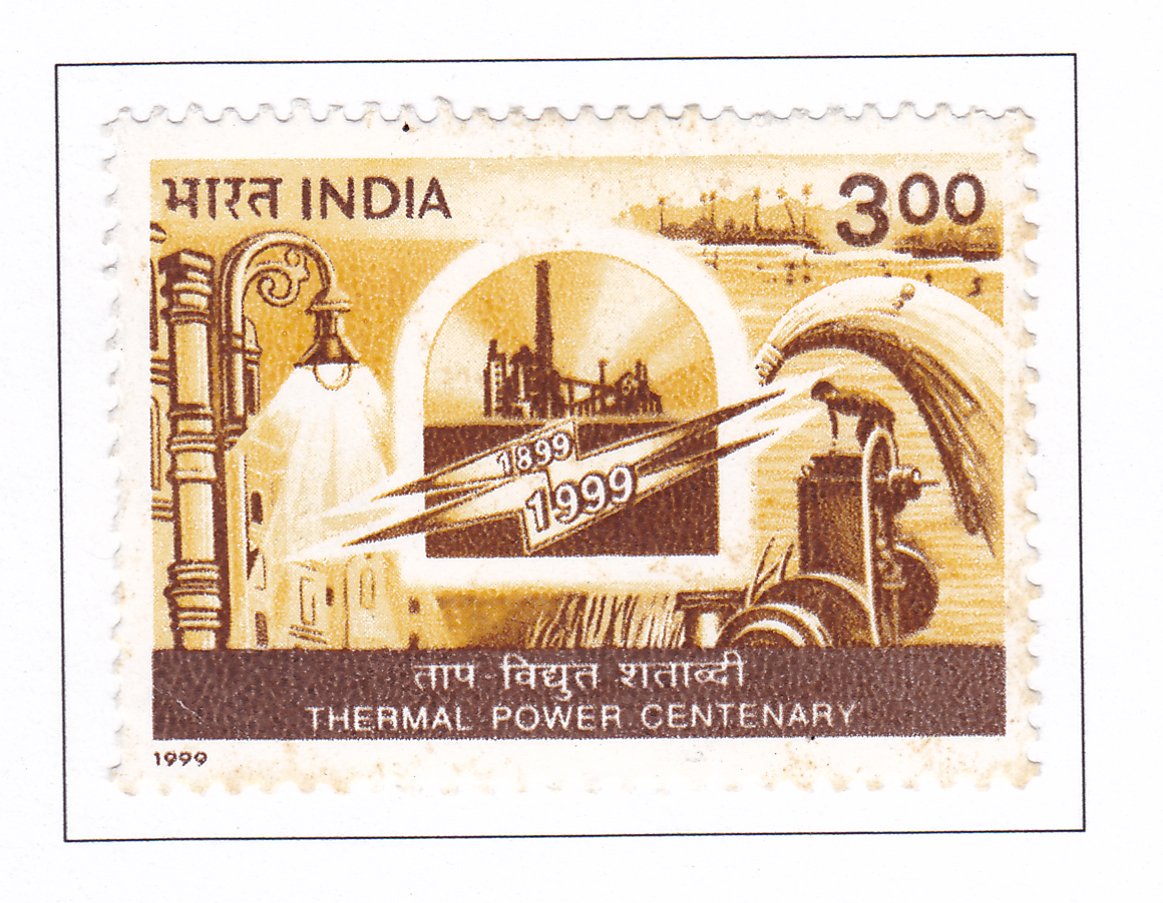Centenary of Thermal Power

Technical Data
| Stamp Set | Centenary Series |
|---|---|
| Date of Issue | December 14, 1999 |
| Denomination | Rs. 3 |
| Quantity | 700,000 |
| Perforation | comb 13½ x 13¼ |
| Printer | Security Printing Press, Nashik |
| Watermark | No Watermark |
| Colors | Multicolor |
| Catalog Codes |
Michel IN 1727 Stamp Number IN 1788 Yvert et Tellier IN 1494 Stanley Gibbons IN 1890 |
| Themes | Energy | Industry |
Table of Contents
Commemoration of Thermal Power Generation in India
Historical Context:
- Early Beginnings: Thermal power generation in India began with the commissioning of a 1 MW Thermal Power plant at Calcutta in 1899, owned by the Calcutta Electric Supply Corporation. This marked the beginning of a significant journey in India’s power sector.
- Growth and Development: Over the past century, India’s thermal power generation capacity has grown to approximately 67,000 MW, reflecting tremendous progress and expansion in the sector.
Key Milestones:
- Early Developments:
- 1951: With the commencement of the First Five-Year Plan, State Electricity Boards and other entities began taking up power development programs. The Electricity Supply Act of 1948 provided the framework for these initiatives.
- 1948 – 1970s: During the early decades, the focus was on quick power availability for industrial development. The decision to utilize low-grade coal and the introduction of pulverized coal technology marked the start of significant thermal power development.
- Technological Advancements:
- 1970s Onwards: The introduction of generating units with capacities ranging from 50 to 80 MW, and later up to 500 MW, marked technological advancements in the sector. Nationalization of the coal industry and indigenous manufacturing of generating units further contributed to progress.
- Environmental Concerns:
- Regulations: With the increase in thermal power generation, environmental safeguards became crucial. The Central Pollution Control Board and State Units introduced stringent regulations to address emissions and protect the environment.
- Liberalization and Future Outlook:
- 1990s Onwards: The liberalization of government controls allowed non-government and private sectors to participate in power development. This has opened opportunities for further expansion and innovation in the thermal power sector.
- Future Requirements: The anticipated capacity addition of 10,000 to 12,000 MW per year over the next two decades is expected to be largely met through thermal power, with significant involvement from both domestic and international sources.
Commemorative Stamp Details:
- Purpose: The Department of Posts issued a stamp to commemorate the centenary of thermal power in India, acknowledging its crucial role in the country’s power generation history and future.
- Design Elements: The stamp likely features imagery related to thermal power generation, such as power plants, turbines, or coal, reflecting the sector’s growth and technological advancements over the past century.
This stamp serves as a tribute to the contributions of thermal power to India’s development and the ongoing efforts to meet the country’s power needs while addressing environmental concerns.
